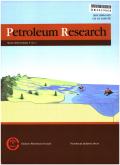A 3D printing approach to microfluidic devices for enhanced oil recovery research: An updated perspective
IF 4
Q1 Earth and Planetary Sciences
引用次数: 0
Abstract
Reservoir simulation uses numerical models to study how reservoir properties impact oil recovery. However, numerical modelling is insufficient and is often paired with physical simulation, where physical models are used to verify and improve simulation results. Historically, physical simulation was conducted using difficult-to-extract reservoir rock samples; however, microfluidic devices (MFDs) have emerged as viable substitutes. Unfortunately, conventional approaches to MFD fabrication leads to devices with physical and chemical properties dissimilar to that of reservoir rock – which can decrease simulation accuracy. Thanks to significant advancements in three-dimensional printing, it can be used to fabricate MFDs with properties and dimensions close to those of reservoir rocks thanks to high resolution, good dimensional accuracy, and a wide range of printable substrates, resulting in more accurate simulation aimed at maximizing oil recovery.
一种用于提高采收率的微流体装置的3D打印方法:一个更新的视角
油藏模拟利用数值模型研究油藏性质对采收率的影响。然而,数值模拟是不够的,往往与物理模拟相结合,利用物理模型来验证和改进模拟结果。过去,物理模拟是使用难以提取的储层岩石样本进行的;然而,微流体装置(MFDs)已经成为可行的替代品。不幸的是,传统的MFD制造方法导致设备的物理和化学性质与储层岩石不同,这可能会降低模拟精度。由于三维打印技术的显著进步,由于高分辨率、良好的尺寸精度和广泛的可打印基材,它可以用于制造具有接近储层岩石性质和尺寸的mfd,从而实现更精确的模拟,以最大限度地提高石油采收率。
本文章由计算机程序翻译,如有差异,请以英文原文为准。
求助全文
约1分钟内获得全文
求助全文
来源期刊

Petroleum Research
Earth and Planetary Sciences-Geology
CiteScore
7.10
自引率
0.00%
发文量
90
审稿时长
35 weeks
 求助内容:
求助内容: 应助结果提醒方式:
应助结果提醒方式:


